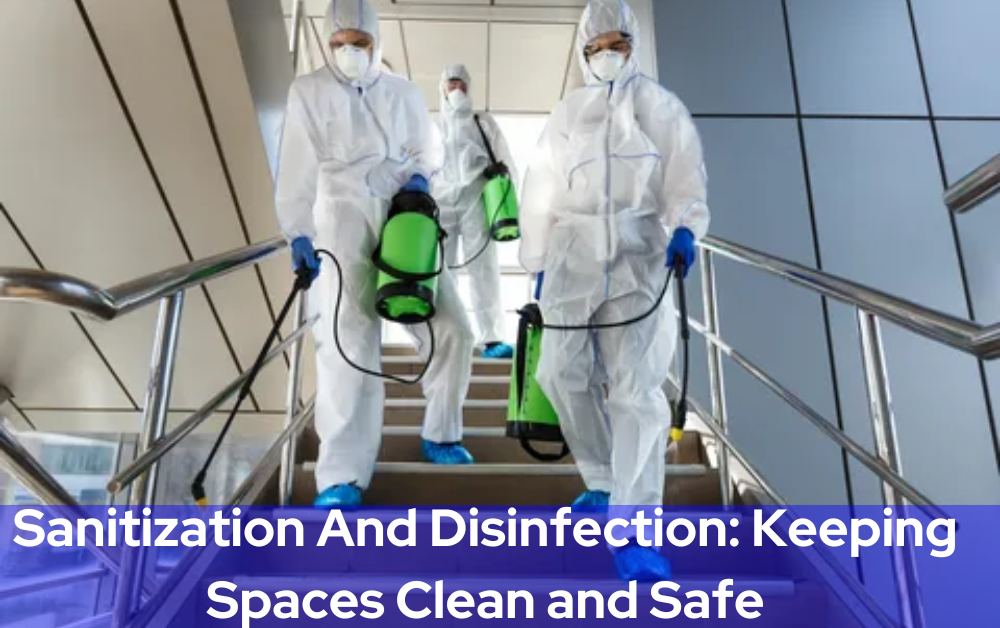
In today’s world, the importance of maintaining clean and safe environments has never been more evident. With the ongoing global health concerns, the need for effective sanitization and disinfection practices is paramount. In this blog post, we’ll delve into the key aspects of sanitization and disinfection, why they are crucial, and how you can implement these practices in your everyday life.
Understanding the Basics
What is Sanitization?
Sanitization is the process of reducing the number of germs and bacteria on surfaces or objects to a safe level. It’s a fundamental step in preventing the spread of diseases. While it doesn’t necessarily kill all microorganisms, it significantly reduces their numbers, making the environment safer.
What is Disinfection?
Disinfection, on the other hand, takes sanitization a step further. It involves the use of chemicals or other methods to kill or inactivate a broader range of microorganisms, including viruses and fungi. Disinfection is essential in high-risk areas where preventing the spread of infection is critical.
Why Sanitization and Disinfection Matter
Preventing Illness
The primary goal of sanitization and disinfection is to prevent illness. By reducing the presence of harmful microorganisms, we can significantly lower the risk of infections and diseases. This is especially important in settings such as healthcare facilities, restaurants, and schools.
Promoting Safety
Sanitization and disinfection also play a crucial role in promoting safety. Whether it’s at home, in the workplace, or in public spaces, keeping surfaces and objects clean helps prevent accidents and injuries. For example, a sanitized kitchen reduces the risk of foodborne illnesses, and a disinfected gym can prevent the spread of skin infections.
Public Health
On a larger scale, the practice of sanitization and disinfection is essential for public health. During outbreaks of infectious diseases, such as the flu or COVID-19, widespread disinfection measures are implemented to curb the spread of the virus. These measures protect not only individuals but entire communities.
Implementing Effective Sanitization and Disinfection
Now that we understand the importance of sanitization and disinfection, let’s explore how to implement these practices effectively.
Identify High-Touch Surfaces
One of the first steps is to identify high-touch surfaces. These are areas or objects that come into frequent contact with hands. Examples include doorknobs, light switches, countertops, and electronic devices. These surfaces require more frequent cleaning and disinfection.
Choose the Right Products
Selecting the right cleaning and disinfecting products is crucial. Look for products that are approved by relevant health authorities and are effective against the microorganisms you want to target. Follow the product’s instructions carefully to ensure proper use.
Cleaning vs. Disinfecting
It’s essential to understand the difference between cleaning and disinfecting. Cleaning involves removing dirt, dust, and debris from surfaces. While it’s an important first step, it doesn’t kill germs. Disinfecting, on the other hand, eliminates microorganisms. Both processes are necessary for a thorough sanitization routine.
Establish Cleaning Schedules
Consistency is key when it comes to sanitization and disinfection. Establish regular cleaning schedules for your home or business. This ensures that surfaces remain clean and safe for everyone. Consider creating a checklist to keep track of tasks.
Train and Educate
If you have a team or employees, provide training on proper sanitization and disinfection procedures. Make sure everyone understands the importance of these practices and how to use cleaning products correctly. Knowledge is a powerful tool in preventing the spread of illness.
Personal Hygiene
In addition to cleaning and disinfecting spaces, personal hygiene plays a significant role. Encourage good handwashing practices, the use of hand sanitizers, and proper respiratory etiquette. These measures complement environmental sanitization efforts.
Conclusion
In a world where health and safety are paramount, sanitization and disinfection are not optional but essential practices. Whether you’re a homeowner, a business owner, or simply an individual looking out for your well-being, understanding and implementing these practices can make a significant difference.
By following the basics of sanitization and disinfection, identifying high-risk areas, choosing the right products, and establishing regular cleaning schedules, you can contribute to a cleaner, safer environment for yourself and those around you. Together, we can promote public health and reduce the risk of illness, making the world a better place for everyone. Stay safe, stay clean.

Tech Hub Digital, a one-stop destination for complete technology-related information.

